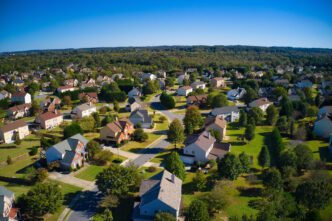In Florida, the rapid increase in the senior population brings a range of challenges, as officials work toward sustainable solutions for housing, healthcare, and other essential services.
Experts have sounded the alarm on the rising crisis facing seniors in South Florida, as more individuals enter retirement with little financial safety net. Broward County Commissioner Steve Geller, the chair of the South Florida Regional Planning Council, highlighted this looming issue, referring to it as the ‘silver tsunami.’ The senior demographic, particularly those 65 and older, is expected to grow significantly, reaching over 2.13 million in the region by 2050.
At a recent conference at Florida Atlantic University, statistics from various reliable sources such as the U.S. Census and the Federal Reserve Bank were discussed. One projection indicated that by 2034, individuals aged 65 and older will outnumber those aged 18 and younger. Moreover, many elderly, especially unmarried women, heavily rely on Social Security for the majority of their income. This demonstrates the economic vulnerability among the senior population.
The need for adequate housing is becoming urgent. Broward Mayor Nan Rich highlighted the current crisis where many seniors’ homes, bought decades ago, now require costly repairs. Some seniors face the threat of homelessness, prompting discussions about new housing solutions such as Pallet shelters and ‘granny flats’ to accommodate multi-generational living. Miami-Dade County is also redeveloping public housing units to better serve its senior residents.
Healthcare for the elderly is another pressing issue, exacerbated by a significant shortage of geriatricians, as noted by Dr. Naushira Pandya from NSU. This shortage poses a challenge in meeting the complex healthcare needs of seniors. Ideas such as incentivizing medical professionals to specialize in geriatrics through loan repayment programs have been proposed by state Sen. Gayle Harrell to attract more doctors to this field.
Transportation needs also require attention, as many seniors eventually outlive their driving abilities. Solutions such as adapting ride-sharing programs to assist seniors in reaching transit stations have been implemented in areas like Palm Beach County. However, more comprehensive measures are needed to ensure seniors’ mobility and reduce isolation, factors that impact their overall well-being.
Addressing the needs of Florida’s aging population requires coordinated efforts across various sectors. Policymakers and community leaders must prioritize long-term strategies to ensure that housing, healthcare, and transportation services evolve to meet the demands of a rapidly growing senior population.
Source: Floridarealtors








